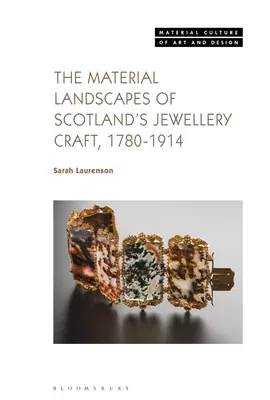During the long 19th century, Scotland was home to an established body
of skilled jewellers who were able to access a range of materials from
the country's varied natural landscape: precious gold and silver;
sparkling crystals and colourful stones; freshwater pearls, shells and
parts of rare animals. Following these materials on their journey from
hill and shore, across the jeweller's bench and on to the bodies of
wearers, this book challenges the persistent notion that the forces of
industrialisation led to the decline of craft. It instead reveals a
vivid picture of skilled producers who were driving new and revived
areas of hand skill, and who were key to fostering a focused cultural
engagement with the natural world - among both producers and consumers -
through the things they made. By placing producers and their skill in
cultural context, the book reveals how examining the materiality of even
the smallest of objects can offer new and multifaceted insights into the
wider transformations that marked British history during the long 19th
century.
The Material Landscapes of Scotland's Jewellery Craft 1780-1914 brings
together a vast array of jewellery objects with a range of other
sources - including paintings, engravings, newspaper reports, letters,
inventories of big houses and small workshops, sketchbooks, novels,
works of literary geology and early travel writings - to provide a
detailed cultural history of jewellery production. In doing so, it sets
out innovative methodologies for writing about the histories of craft
production, the natural environment and the material world.

